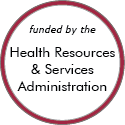Chronic Disease in Rural America – Models and Innovations
These stories feature model programs and successful rural projects that can serve as a source of ideas and provide lessons others have learned. Some of the projects or programs may no longer be active. Read about the criteria and evidence-base for programs included.
Other Project Examples
Positively Living & Choice Health Network
Updated/reviewed February 2024
- Need: To provide affirming, destigmatized healthcare and support to thousands of Tennesseans living with HIV/AIDS, mental illness, substance use disorder, and homelessness – and prevention services for individuals at risk of contracting HIV.
- Intervention: Positively Living & Choice Health Network provides services including a medical clinic, pharmacy, therapy, case management, client services like housing aid and transportation, HIV prevention, and a harm reduction program.
- Results: The program currently serves 5,000 individuals and families through its offices in Knoxville, Chattanooga, Memphis, and Cookeville and its mobile medical unit for rural communities in Cocke and Claiborne counties.
Facing Diabetes: Quality Improvement in Rural South Dakota Project

Updated/reviewed May 2023
- Need: To help adults and children in rural South Dakota prevent or manage their diabetes.
- Intervention: The Facing Diabetes Project offered medical visits for adults and provided prevention and education sessions for the local 4th and 5th graders.
- Results: Many adults and children in the region felt better equipped to choose healthy foods, exercise regularly, and manage their stress: all factors that can help prevent diabetes or decrease its effects.
It's a Girl Thing: Making Proud Choices
Updated/reviewed February 2023
- Need: Teen pregnancy and sexually transmitted diseases, including HIV, in young girls were concerns for members of Union Parish, Louisiana.
- Intervention: Union General Hospital, a Critical Access Hospital, created the program It's a Girl Thing: Making Proud Choices to teach prevention, self-confidence, and personal responsibility to teen girls.
- Results: Teen pregnancy rates in Union Parish have dropped by 18%, exceeding the program's initial goal of 5%. Graduation rates have also increased the longer girls remain in the program.
ASPIN's Certified Recovery Specialist Program


Updated/reviewed September 2022
- Need: Improved approach in addressing the behavioral health and primary care disparities of Indiana's rural counties.
- Intervention: A network was established that trained community health workers (CHWs) to be certified health insurance enrollment navigators and provide mental health services.
- Results: This year, ASPIN trained 230 CHWs, cross-trained 70 behavioral health case managers as CHWs, and 35 individuals in the Indiana Navigator Pre-certification Education.
Boone County Health Center Pulmonary Rehabilitation Program
Updated/reviewed June 2022
- Need: Evidenced-based intervention to improve function and quality of life for patients with chronic obstructive pulmonary disease and other chronic lower respiratory conditions.
- Intervention: Pulmonary rehabilitation program implementation in 1989.
- Results: Compared to a national average of only about 3% of referred Medicare beneficiaries actually enrolling in pulmonary rehabilitation, 60% of the program's referred patients enroll. Averaging around 15 patients/year completing the program, a large combined cardiac and pulmonary rehabilitation maintenance population averages 8,000 visits/year.
Medical Home Plus

Updated/reviewed February 2020
- Need: To help reduce diabetes, depression, and stroke risk in rural residents.
- Intervention: A collaborative care model was implemented in the Idaho counties of Clearwater, Idaho, and Lewis.
- Results: Increased number of patients with controlled blood sugar, controlled blood pressure, and higher depression screening rates.
University of Mississippi Medical Center's Center for Telehealth

Updated/reviewed January 2020
- Need: Rural areas in Mississippi often lack adequate access to specialty healthcare services such as emergency medicine, stroke neurology, pediatric specialists and psychiatrists.
- Intervention: The University of Mississippi Medical Center created the Center for Telehealth to deliver quality specialty services through telehealth video conferencing and remote monitoring tools to the underserved areas of Mississippi.
- Results: The program has been successfully implemented throughout many of the state's rural hospitals and has reduced transfers and geographic barriers for patients.
COPD Readmission Prevention Program
Updated/reviewed December 2019
- Need: Organized effort targeting COPD patients' medical needs in order to prevent hospital readmission in Zanesville, Ohio.
- Intervention: Creation of an integrated system model using nurse navigators that incorporates evidence-based chronic disease care management approaches to COPD care.
- Results: Improved readmission rates and overall improved acute and chronic care for the area's COPD patients.
The Adolescent Pre-Diabetes Prevention Program

Added October 2018
- Need: Prevention of type 2 diabetes in adolescents living in rural parts of Louisiana.
- Intervention: Through screenings, the Adolescent Pre-Diabetes Prevention Program detects the onset of prediabetes. Through nutrition and physical activity education, the program teaches high school students and staff how to adopt healthy lifestyles.
- Results: The program has seen an increase in enrollment and continues to see decreases in body weight, body mass index, and A1C levels among participants.
Last Updated: 2/5/2024

